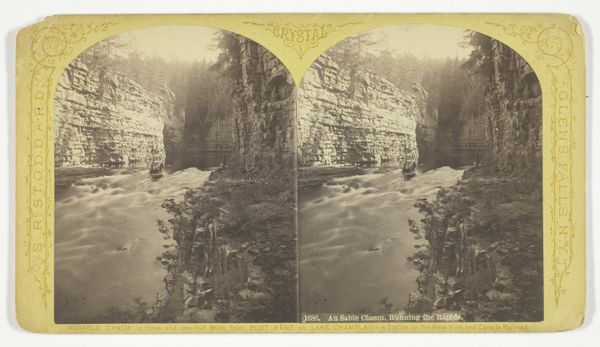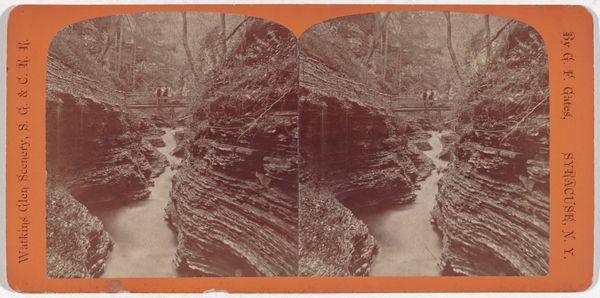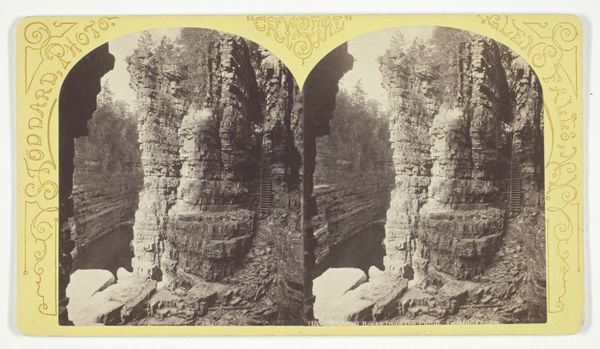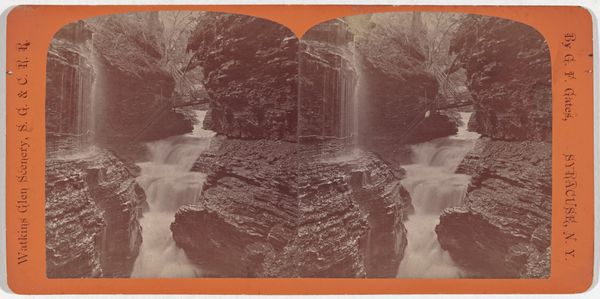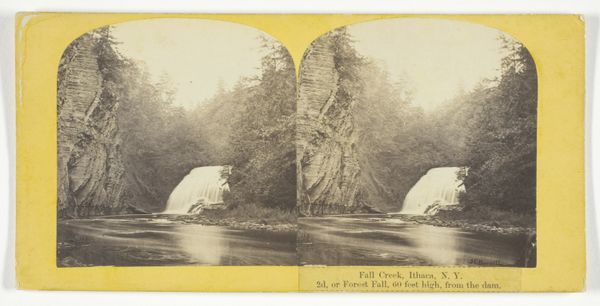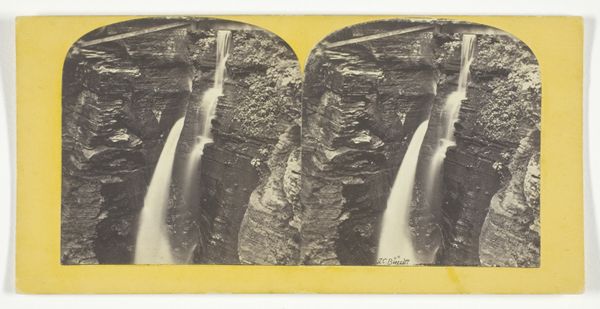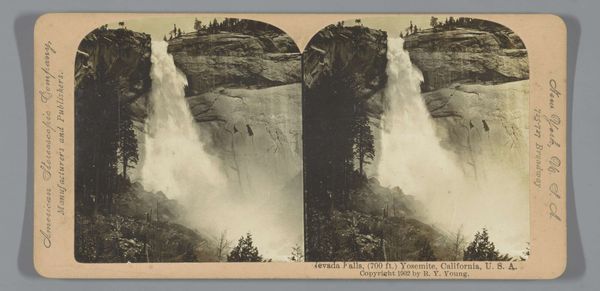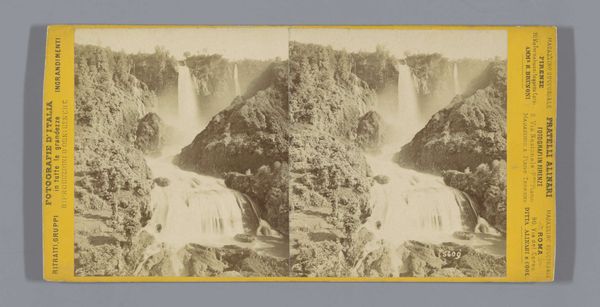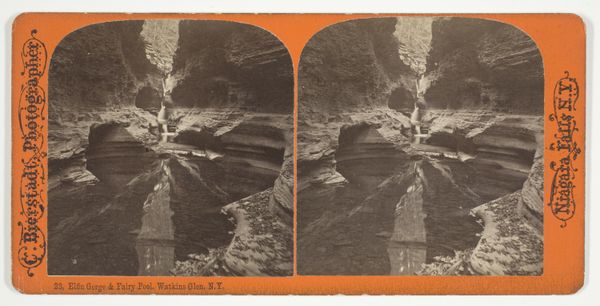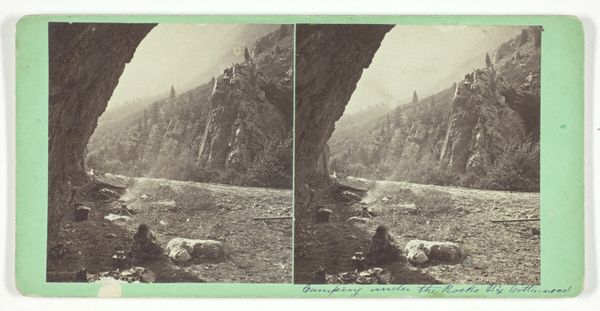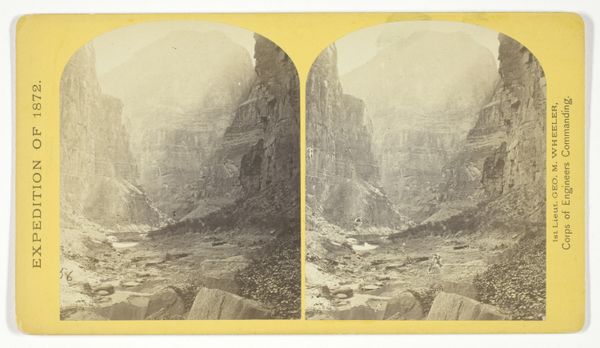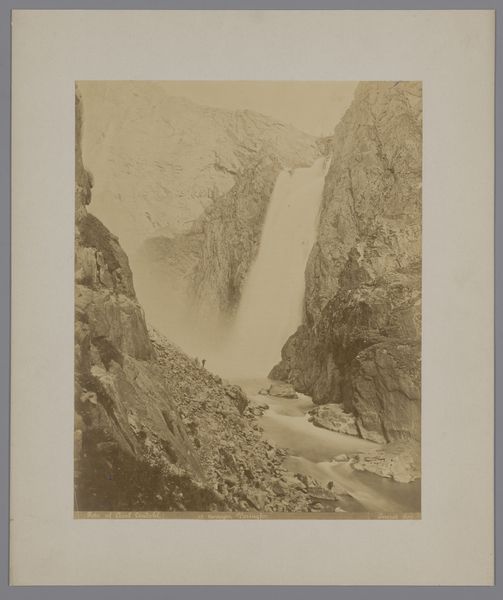
photography
#
16_19th-century
#
landscape
#
photography
#
hudson-river-school
Dimensions: 9.3 × 7.6 cm (each image); 9.9 × 17.8 cm (card)
Copyright: Public Domain
Curator: Here we have Seneca Ray Stoddard's "The Grand Flume, Ausable Chasm," a stereograph dating from sometime between 1870 and 1876. Editor: My first impression is the photograph's striking depth. The receding river, nestled deep within the chasms, feels almost vertiginous, drawing the eye into the center of the image. Curator: The use of the stereograph is particularly compelling for enhancing that depth. Stoddard meticulously frames the chasm to exploit the paired images. This photograph speaks volumes about the Romantic movement's relationship with landscape. The Hudson River School had a real fascination with the sublime qualities of untamed nature. Editor: Sublime, definitely, in the way its structural symmetry creates this visual corridor of rock. Did he intend to evoke a sense of the viewer being both enveloped by nature but also excluded from direct access? The vantage point emphasizes a certain separation, placing the viewer on a plane apart from the stream below. Curator: Exactly! And think about what it meant to produce and circulate this kind of imagery. With the advent of the railroad, places like Ausable Chasm became newly accessible, contributing to the growth of tourism and a desire to document the experience through photography. It highlights how landscapes become not only aesthetic experiences but also cultural commodities. Editor: A commodity marketed to Easterners through photography, indeed. Let's look closer at the textural details: the layers in the exposed rock, the dark vegetation clinging precariously to the chasm’s edge. The textures become especially visible when we focus our eyes past the initial depth. What would semiotics suggest we can ascertain about the culture which would propagate photographs of the textures of stones? Curator: It certainly points towards the construction of nature for viewers far away. We observe, through such documentation, not only nature but, the public's understanding of its place within it at that moment in time. This chasm then becomes an emblem of American natural grandeur in a rapidly industrializing society. Editor: Indeed. An accessible grand vision offered and framed for easy visual digestion. After our analysis, what began as simply a dramatic vision opens now onto reflections of place and value. Curator: Exactly. And it highlights that this isn’t simply about capturing a natural scene, it’s about the ways we make sense of ourselves within it, historically and aesthetically.
Comments
No comments
Be the first to comment and join the conversation on the ultimate creative platform.
